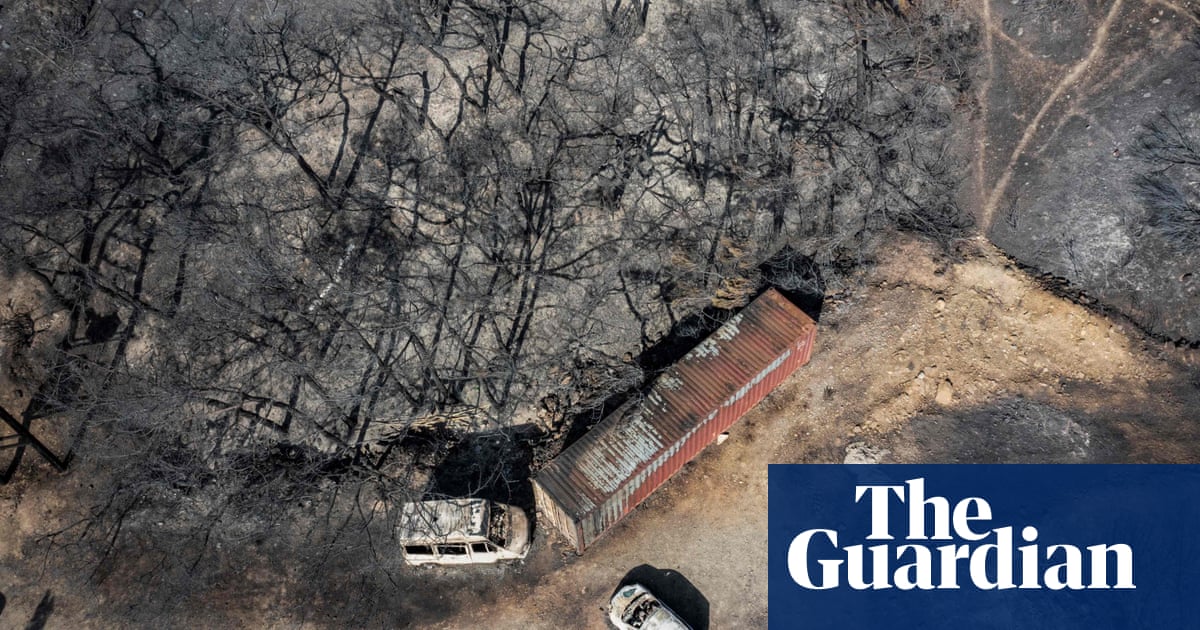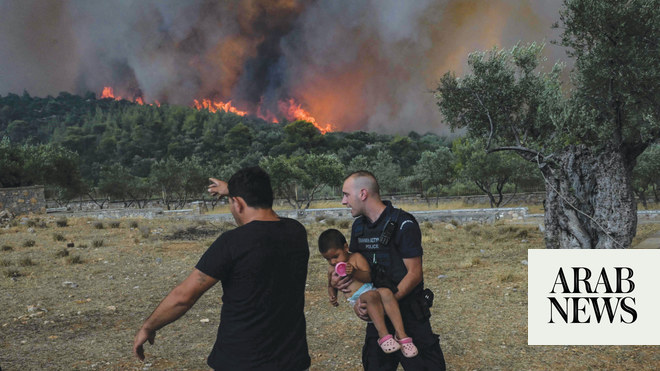
Scorching weather has baked Europe in more days of “extreme heat stress” than its scientists have ever seen.
Heat-trapping pollutants that clog the atmosphere helped push temperatures in Europe last year to the highest or second-highest levels ever recorded, according to the EU’s Earth-watching service Copernicus and the World Meteorological Organization (WMO).
Europeans are suffering with unprecedented heat during the day and are stressed by uncomfortable warmth at night. The death rate from hot weather has risen 30% in Europe in two decades, the joint State of the Climate report from the two organisations found.
“The cost of climate action may seem high,” said WMO secretary-general Celeste Saulo, “but the cost of inaction is much higher”.
The report found that temperatures across Europe were above average for 11 months of 2023, including the warmest September since records began.
The hot and dry weather fuelled large fires that ravaged villages and spewed smoke that choked far-off cities. The blazes that firefighters battled were particularly fierce in drought-stricken southern countries such as Portugal, Spain and Italy.
Greece was hit by the largest wildfire recorded in the EU, which burned 96,000 hectares of land, according to the report.
Heavy rain also led to deadly floods. Europe was about 7% wetter in 2023 than the average over the last three decades, the report found, and one-third of its river network crossed the “high” flood threshold. One-sixth hit “severe” levels.
“In 2023, Europe witnessed the largest wildfire ever recorded, one of the wettest years, severe marine heatwaves and widespread devastating flooding,” said Carlo Buontempo, director of the Copernicus climate change service.
“Temperatures continue to increase, making our data ever more vital in preparing for the impacts of climate change.”
The role of global heating in increasingly heavy rainfall is not always clear. Warmer air can hold more moisture, allowing for more extreme storms, but complex climatic changes mean that water is not always available to fall.
But for heatwaves, the link is far stronger. The report did not give figures for the death toll from heat in 2023 but scientists have pegged the body count in 2022 at 70,000 extra deaths.
The number of heat-related deaths in 2023 is likely to have been higher, said Friederike Otto, a climate scientist at Imperial College London, who was not involved in the report. “For many of these deaths, the additional heat caused by fossil fuel emissions would have been the difference between life and death.”
The report comes two weeks after the European court of human rights ruled that Switzerland’s weak climate policy violated the human rights of a group of older women, who are more likely to die from heatwaves.
The ruling leaves all European governments vulnerable to court cases pushing them to enact policies that keep the planet from heating 1.5C (2.7F) above preindustrial levels by the end of the century.
Ana Raquel Nunes, assistant professor in health and environment at the University of Warwick, who was not involved in the report, said urgent action to protect health and include it in climate policy was “imperative”.
“Anything less will be denying future generations the protection and foresight they deserve,” she said.
As well as highlighting the extreme climate damages, the scientists also pointed to the record-breaking amount of electricity made from renewable sources. In 2023, 43% of electricity came from renewables, up from 36% the year before.
Otto said: “If humans continue to burn oil, gas and coal, heatwaves will continue to get hotter and vulnerable people will continue to die.”












